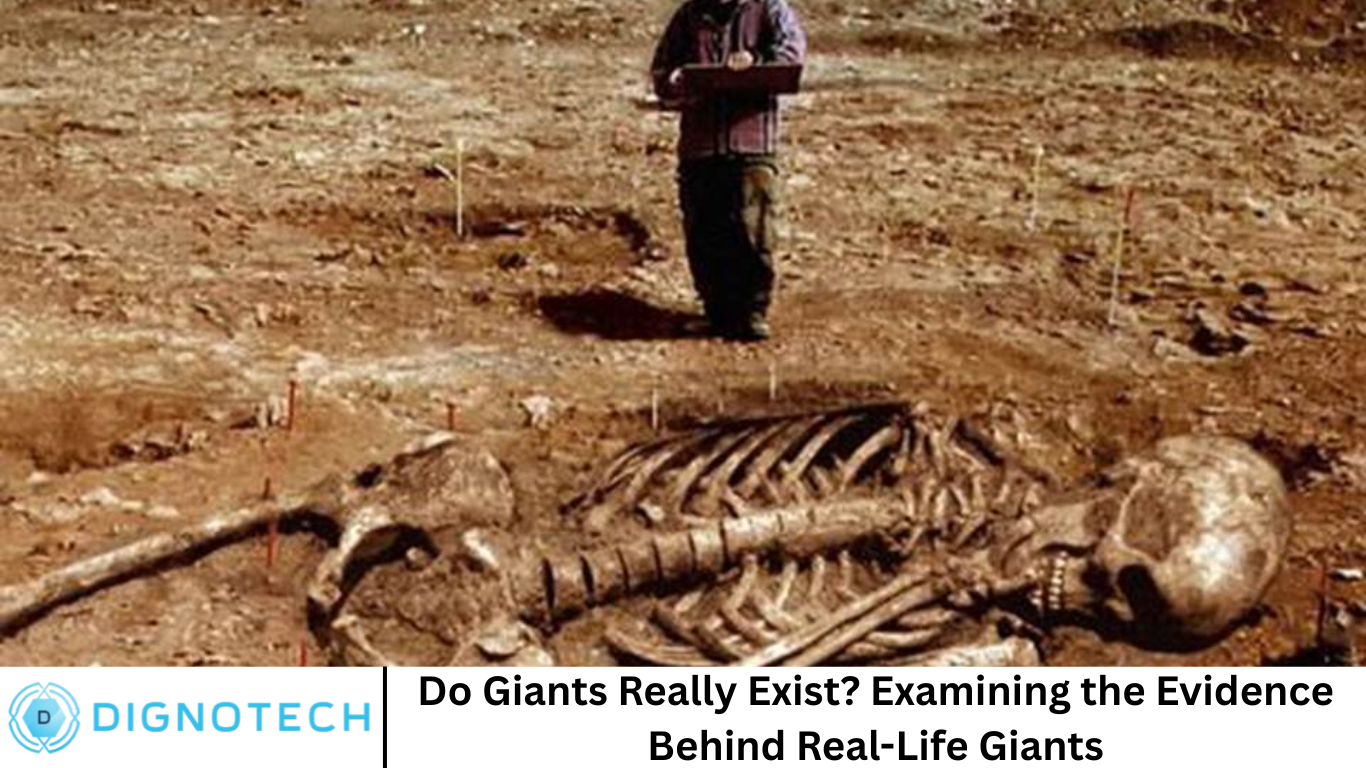Do Giants Really Exist? Examining the Evidence Behind Real-Life Giants

Hi everyone! How are you all doing? Welcome to dignotech.com! The concept of giants has fascinated humans for centuries. From the towering behemoths of mythology to the mysterious skeletal remains said to be of gigantic humans, giants have been woven into the fabric of cultural lore worldwide. Stories of giants appear in ancient texts, religious scriptures, folklore, and modern urban legends, with tales of enormous beings that dwarf ordinary men. But do giants really exist? Are they merely the stuff of myth and imagination, or is there some truth behind these stories?
In this article, we delve into the historical, scientific, and cultural evidence regarding the existence of giants. We will explore ancient accounts, archaeological discoveries, genetic anomalies, and the scientific explanations behind what some believe to be real-life giants.
The Myth and Legacy of Giants in History
The concept of giants is present in nearly every culture. In Greek mythology, there were the Gigantes, a race of enormous beings who fought against the gods. In the Bible, the Nephilim are described as giants, particularly in the Book of Genesis. According to the ancient text, the “sons of God” took wives from the “daughters of men,” and their offspring were giants, who lived on the earth before the flood. Other civilizations, including the ancient Egyptians, the Norse, and the Sumerians, also tell stories of gods or beings of gigantic size.
These myths and stories were often used to explain the mysterious or the unknown, such as the formation of mountain ranges, the origins of great cities, or the foundation of specific cultural beliefs. However, were these giants simply exaggerated stories, or do they represent something more?
Archaeological Discoveries: Bone Remains and Skeletons
One of the most commonly cited pieces of evidence in the debate over the existence of giants is the discovery of large skeletons. Over the years, there have been numerous reports of oversized skeletal remains unearthed in various parts of the world. Some believe these are evidence of a race of giants who once roamed the Earth. Others argue these bones may simply be from individuals suffering from gigantism or other medical conditions.
- The “Giant Skeleton” Finds: One famous example involves the discovery of a set of skeletal remains in the 19th century. In multiple instances, reports surfaced of large, human-like skeletons found buried deep in the earth. Some of these bones were said to be up to 12 feet long, which would suggest a human individual of tremendous size.
- The Smithsonian and Giant Skeletons: Numerous conspiracy theories claim that the U.S. government and the Smithsonian Institution suppressed evidence of giant skeletons in the early 1900s. According to these theories, bones of humans measuring 10-12 feet were supposedly found in places like the Appalachian Mountains, the Midwest, and even the Grand Canyon. Skeptics dismiss these claims as hoaxes, while some argue that the government may have covered them up for unknown reasons.
- Gigantism and Acromegaly: Medical conditions like gigantism and acromegaly can cause abnormal growth in humans. Gigantism, caused by an overproduction of growth hormone, leads to individuals growing much taller than average. A famous example of this is Robert Wadlow, who, due to a tumor on his pituitary gland, reached a height of 8 feet 11 inches before his death. Other notable figures like Paul Wight (Big Show) in professional wrestling, who is over 7 feet tall, are also examples of how gigantism can manifest. However, this condition does not lead to individuals of 10-15 feet in height.
Genetic Mutations and the Possibility of Giant Humans
While it may sound unbelievable, some researchers believe that it is possible for humans to grow to sizes far beyond what we consider normal due to genetic mutations. Conditions such as gigantism, caused by an overproduction of growth hormones, have led to some individuals reaching extraordinary heights, but they remain far below the size of the giants described in myth.
- The Role of Genetics: In most cases of gigantism, genetic mutations affect the production of growth hormones, causing excessive growth of bones and tissues. Some individuals, such as the aforementioned Robert Wadlow, are living (or were living) examples of how genetics and hormonal imbalances could result in extreme height.
- Paleontological Evidence: Fossils of prehistoric humans and human ancestors suggest that there have been variations in size. Some anthropologists suggest that certain early human species, like Homo heidelbergensis, may have been larger than modern humans. However, there is no conclusive evidence of a separate species of “giant humans” in the fossil record.
Giant Animals and the Mythic Connection
In the animal kingdom, we also see a phenomenon of “giant” species. These are animals that grow to much larger sizes than their modern counterparts, sometimes due to evolutionary factors or environmental changes. The largest mammals, reptiles, and amphibians in history often appear in ancient fossil records. For example, the Megalodon, an ancient shark, was thought to have reached lengths of up to 60 feet.
In relation to giants, the size of these ancient creatures is often used as a metaphor or support for the idea that gigantic beings may have once existed. Some believe that the same environmental or evolutionary factors that contributed to the existence of giant animals could have led to a race of giants among early humans. However, most of this remains speculative and unsubstantiated by concrete evidence.
The Science of Giant Myths: Psychological and Cultural Perspectives
Many historians and psychologists believe that the concept of giants has psychological and cultural significance. The perception of giants may be a metaphor for forces larger than life that early humans encountered—like the challenges of nature, towering mountains, or dangerous animals.
- Psychological Symbolism: Giants are often used as symbols of overwhelming power or natural forces. For example, in Greek mythology, the Titans were often depicted as embodying uncontrollable natural forces. Similarly, in the Bible, the Nephilim symbolize human arrogance and the consequences of violating divine laws.
- Cultural Archetypes: The giant can also be viewed as a reflection of human fears and desires. On the one hand, giants represent obstacles to be overcome, such as in the story of David and Goliath, where the young hero triumphs over a giant. On the other hand, they can embody the fantasy of limitless power or the desire for greatness, as seen in the ancient tales of gods and demigods.
Modern Interpretations and Conspiracy Theories
In today’s world, giants still capture the imagination of many. While mainstream science remains skeptical about the existence of giant humans, there are numerous conspiracy theories surrounding the topic. Some believe that there is a hidden truth regarding the existence of giants that is being deliberately suppressed by governments and scientific organizations.
- The Grand Canyon and Hidden Giants: Some conspiracy theorists claim that ancient giant skeletons were discovered in caves in the Grand Canyon, only to be hidden away by government agencies like the Smithsonian. However, no credible evidence has emerged to support these claims, and most experts believe these reports are either hoaxes or misunderstandings.
- The Suppressed Evidence of Giants: Another conspiracy theory suggests that large, human-like skeletons found in North America were deliberately suppressed to protect certain historical narratives. Proponents of this theory argue that the discovery of giants would undermine conventional archaeological timelines and the understanding of human history.
Frequently Asked Question
What is the scientific explanation for giant humans?
The scientific explanation for giant humans lies in medical conditions such as gigantism and acromegaly. These conditions occur when the pituitary gland produces excess growth hormone, leading to abnormal growth of bones and tissues. However, these conditions do not result in giants as described in myths, with most individuals affected by gigantism growing no taller than 8 to 9 feet.
Have giant skeletons been found?
While there have been claims of giant skeletons being discovered, these reports are largely unverified, and many are considered hoaxes. Legitimate archaeological findings do not support the existence of a race of giants. Most of the large skeletons cited in these claims can be explained by individuals suffering from gigantism.
What is the origin of the giant myth in ancient cultures?
The myth of giants appears in many ancient cultures as a way to explain natural phenomena, such as the creation of mountains or the existence of ancient ruins. Giants were often used as symbols of strength, chaos, or divine power.
Could humans ever grow to be giants?
Under current genetic and environmental conditions, humans cannot naturally grow to the size described in myths. Gigantism, caused by medical conditions, can result in extreme height, but it does not lead to the massive, mythic proportions often depicted in folklore.
Are there any large human skeletons that could support the giant theory?
No scientifically verified discovery of human skeletons exceeding 10 feet has ever been made. While some unusually large skeletons have been found, they are typically from individuals with medical conditions such as gigantism, not evidence of a race of giants.
Can giant animals provide evidence of the existence of giants?
While giant animals like Megalodon or giant prehistoric mammals do exist in the fossil record, their existence does not directly support the idea that human-sized giants once roamed the Earth. Environmental factors may have contributed to the larger sizes of prehistoric animals.
What role do conspiracy theories play in the belief in giants?
Conspiracy theories surrounding giants often rely on the belief that the truth has been hidden by scientific and governmental institutions. These theories, however, lack credible evidence and are often based on misinterpretations of historical or archaeological data.
Conclusion
The question of whether giants ever existed remains a captivating subject, blending mythology, historical accounts, and modern conspiracy theories. While there is no solid scientific evidence to support the idea that giant humans once roamed the Earth, the enduring appeal of giants reflects humanity’s fascination with the unknown and the desire to understand the forces that shaped the world. Whether they are real or simply symbolic, giants will continue to hold a place in the stories we tell, serving as metaphors for power, fear, and the mysterious forces of nature.


